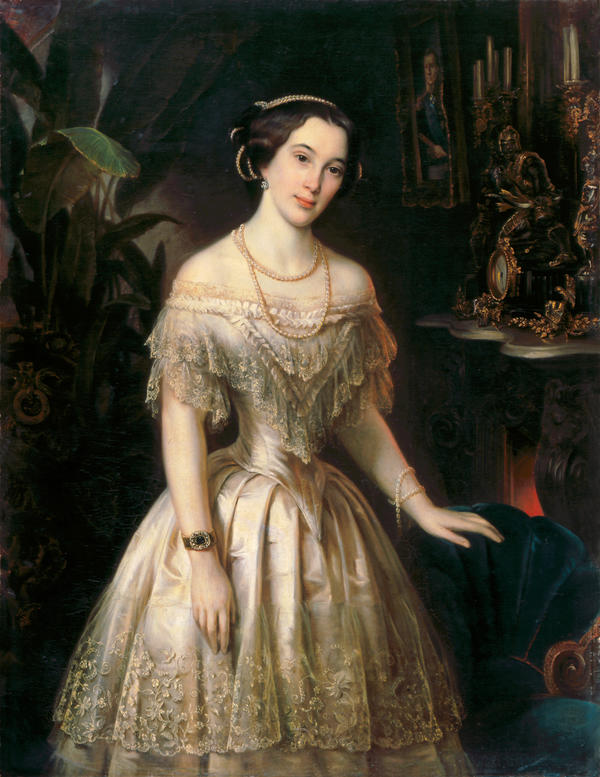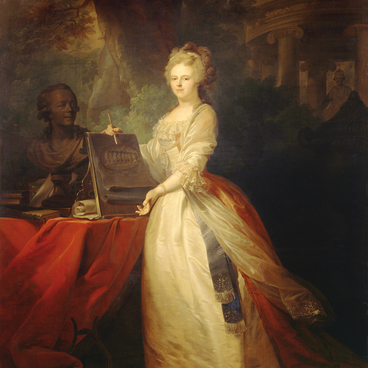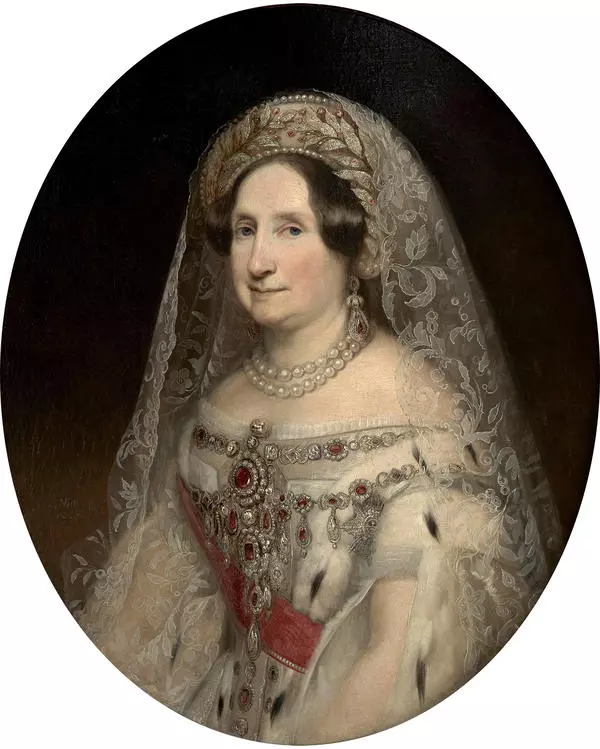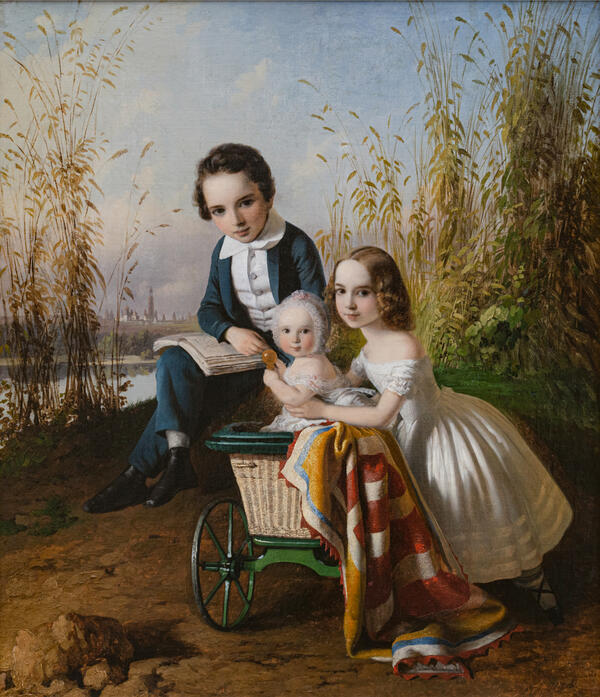The painting by Timofey Neff, a historical portrait painter, was received by the museum entitled Portrait of a Lady. In order to identify the model represented on the canvas, the portrait was examined by museum employee Ivan Vashchenko. The art expert noticed a portrait of a military man with a spy-glass – Timothy Neff painted it in the picture to the right of the face of the young woman.
First of all, Vashchenko noticed the blue ribbon of the highest Russian order, the Order of St. Andrew the Apostle the First-Called. However, by the middle of the 19th century, hundreds of Russian and foreign crowned heads and their subjects had become cavaliers of this order - it was almost impossible to find the one depicted in the portrait among them. Yet, another detail helped: a large white cross was visible from the unbuttoned collar of the uniform – the Order of St. George, II degree.
Throughout history, only 125 people have been awarded this order. The researcher was able to distinguish gold embroidery on the collar, against a black or dark green background: these colours were intended for flag officers of the Russian imperial fleet. In Russian history, the Order of the II degree was awarded to seven admirals in total, in the 19th century there were only two of them: Alexey Greig and Pavel Nakhimov.
After the image in the picture was compared with famous images of the admirals, it became possible to identify that the one depicted in the portrait was Alexey Greig. At the time of creation of the Portrait of a Lady, among the Admiral’s close relatives, there was his wife who was much older than the depicted girl, and two daughters: 23-year-old Julia and 16-year-old Eugenia. Neff’s model was Julia Stieglitz.
She was married to Nikolai Stieglitz, Privy Councillor and Ambassador to Rome. Contemporaries were dazzled by her unusually thin waist. The artist depicted Julia in a light ball-gown, emphasizing this feature of her figure.
Timofey Neff was a famous historical and portrait painter. The master was born in Estonia. He studied art at the Dresden Academy of Arts in 1823-1825. After studying in Germany, Neff moved to Italy, where he studied the works by Raphael, Titian, Michelangelo, and other great masters.
In 1826, he came to St. Petersburg and gained fame among the capital’s public thanks to his portraits of representatives of high society and paintings inspired by High Classicism. In 1832, Timofey Neff was appointed to the post of Court Painter. In 1834, he received a life-long pension from the Imperial Court, for the images created for the church in Alexandria. For the images made for the Small Church of the Winter Palace, the artist received the title of Academician.
In 1843, Timofey Neff took part in the painting of St. Isaac’s Cathedral. A year later, the painter received a Russian title of nobility, and in 1849 he became a professor at the Imperial Academy of Arts.
The last 20 years of his life, Neff taught at the Academy of Arts. In 1864, in recognition of his contribution to art, the artist was appointed the keeper of the Hermitage’s art gallery. Timofey Neff died in St. Petersburg, at the age of 71; he was buried at the Smolensk Lutheran cemetery.
First of all, Vashchenko noticed the blue ribbon of the highest Russian order, the Order of St. Andrew the Apostle the First-Called. However, by the middle of the 19th century, hundreds of Russian and foreign crowned heads and their subjects had become cavaliers of this order - it was almost impossible to find the one depicted in the portrait among them. Yet, another detail helped: a large white cross was visible from the unbuttoned collar of the uniform – the Order of St. George, II degree.
Throughout history, only 125 people have been awarded this order. The researcher was able to distinguish gold embroidery on the collar, against a black or dark green background: these colours were intended for flag officers of the Russian imperial fleet. In Russian history, the Order of the II degree was awarded to seven admirals in total, in the 19th century there were only two of them: Alexey Greig and Pavel Nakhimov.
After the image in the picture was compared with famous images of the admirals, it became possible to identify that the one depicted in the portrait was Alexey Greig. At the time of creation of the Portrait of a Lady, among the Admiral’s close relatives, there was his wife who was much older than the depicted girl, and two daughters: 23-year-old Julia and 16-year-old Eugenia. Neff’s model was Julia Stieglitz.
She was married to Nikolai Stieglitz, Privy Councillor and Ambassador to Rome. Contemporaries were dazzled by her unusually thin waist. The artist depicted Julia in a light ball-gown, emphasizing this feature of her figure.
Timofey Neff was a famous historical and portrait painter. The master was born in Estonia. He studied art at the Dresden Academy of Arts in 1823-1825. After studying in Germany, Neff moved to Italy, where he studied the works by Raphael, Titian, Michelangelo, and other great masters.
In 1826, he came to St. Petersburg and gained fame among the capital’s public thanks to his portraits of representatives of high society and paintings inspired by High Classicism. In 1832, Timofey Neff was appointed to the post of Court Painter. In 1834, he received a life-long pension from the Imperial Court, for the images created for the church in Alexandria. For the images made for the Small Church of the Winter Palace, the artist received the title of Academician.
In 1843, Timofey Neff took part in the painting of St. Isaac’s Cathedral. A year later, the painter received a Russian title of nobility, and in 1849 he became a professor at the Imperial Academy of Arts.
The last 20 years of his life, Neff taught at the Academy of Arts. In 1864, in recognition of his contribution to art, the artist was appointed the keeper of the Hermitage’s art gallery. Timofey Neff died in St. Petersburg, at the age of 71; he was buried at the Smolensk Lutheran cemetery.






